OURAY (Day 18 - part 1)
We slept in, awaking to the whistle of the train as it signaled its departure from the downtown station. After a leisurely breakfast in the hotel, we set out. Our route today was going to take us over Highway 550, also known as the San Juan Scenic Skyway.

Running along the railroad tracks we were just on yesterday



Where's there's smoke there must be... a steam train engine! We'd apparently caught up to (and were now passing) one of the trains we'd heard leaving town earlier.

A view of our road across a narrow valley as we continue our steep ascent
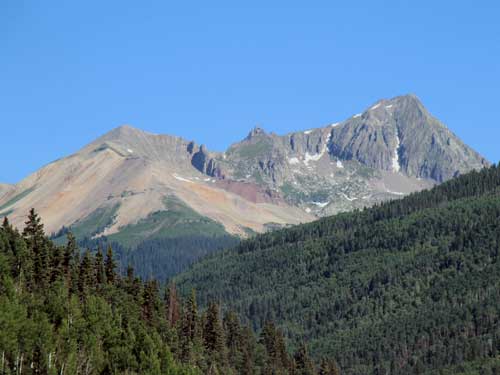

Molas Pass (elevation 10,910 feet)


Molas Lake


Silverton rests in a valley called Baker's Park, named after prospector Charles Baker, who led the first enduring venture here in 1860.


We made a quick stop at the visitor center. It was filled with historic items and photos.


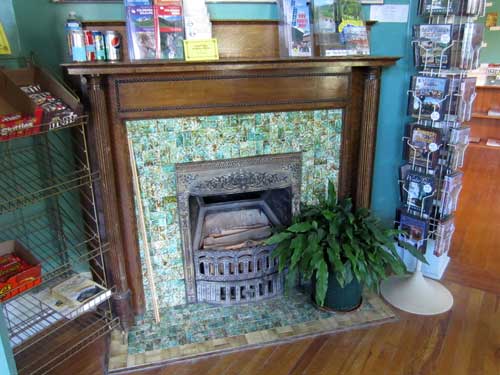

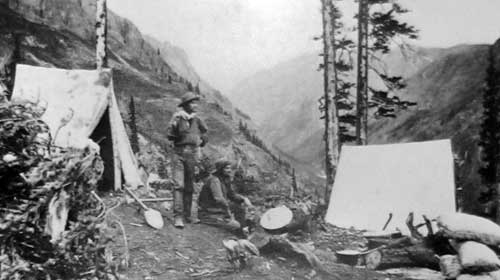
1878 - mining camp. Initially it was gold that lured the miners to these valleys but it was silver that kept the mines going.

Early mining trails most likely followed routes used by the Spanish expeditions, who in turn were following routes the Native Americans had been using for thousands of years.
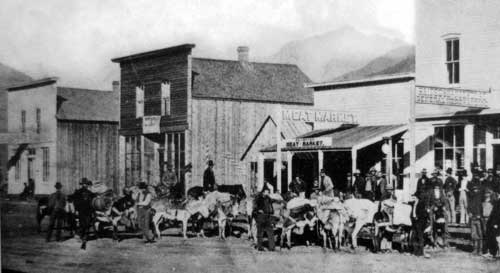
1881 - pack mules loaded with supplies

An old miner with his best friend

1882 - The railroad arrived, allowing all sorts of goods to be quickly, easily and more cheaply transported than had been possible with teams and wagons.

1883

1900

1911 - with Kendall Mountain in the background

1912 - The first State Highway Commission began to create a road system from the network of toll roads. This is the highway we're on now!

1914 - horse drawn ore train

Man and beast, working together deep in a mine

1920's - The road into town was finally paved.
Outside was some old mining equipment.

An ore cart and two shaft cans. The smaller can could hold about two tons of ore and required an electric- or steam-powered hoist to lift it out of the shaft.

Shaft cans carried broken ore from the bottom of a shaft to the surface. This was done by shoveling rock into it until it was full. A signal was then given to the operator above who began hoisting it to the surface, either using electric or steam power or by a hand-crank. Once at the surface, he attached a chain to the bottom of it. The can was then lowered slightly, which caused it to tip over and dump its ore into a cart or chute.

Swivel end-dump cars ranged from one- to two-ton capacity. The box portion sat on a turntable that allowed it to swing to either side while the wheels remained stationary on the track. This one could carry 1.5 tons and could be handled and dumped by a single person.

An early end-dump car in use, 1880
Joanne then volunteered Bill for a special kind of adventure... one that went back in time...

This is the location of the town's oldest recorded bordello, purchased in 1878 by Alice Morris. Today with a false front, it has been home to Professor Shutterbugs Old Tyme Portrait Parlour since 1974.

It might look like a second-hand store, but...



We then headed out of town to catch an afternoon tour of an old mine.

Greene Street

The Grand Imperial Hotel (left) was built from 1882 - 83. Its second floor was once used as the courthouse.

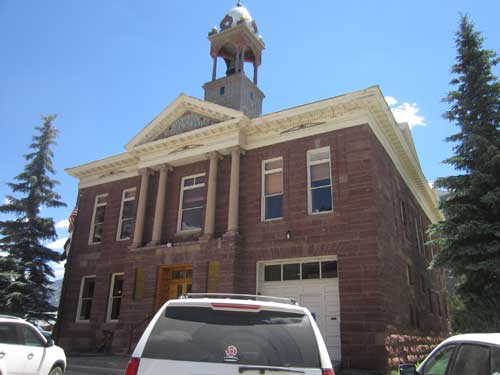
The town hall was started in 1908, but before it was finished, the four pillars in front fell off so the city changed contractors.

return • continue

